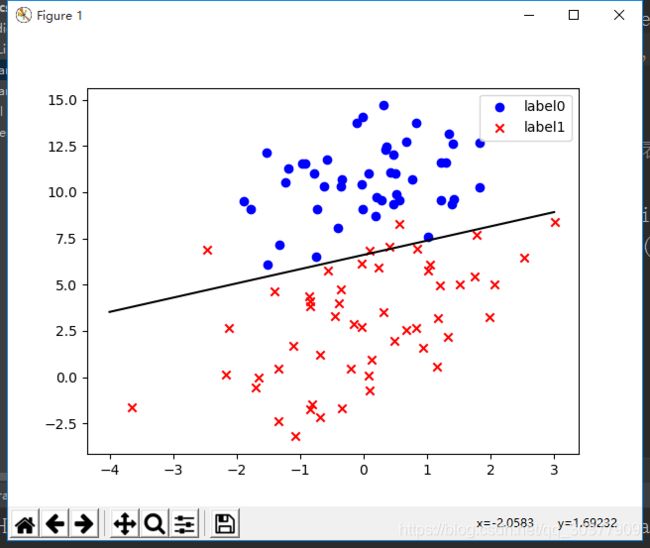线性逻辑回归的代码实现
线性逻辑回归的代码实现
载入数据
data = np.genfromtxt(r'data.csv', delimiter=',')
x_data = data[:, :-1] # 特征
y_data = data[:, -1] # 标签
可以看到,这个数据集有3列,前两列为特征,最后一列‘1’和‘0’为标签
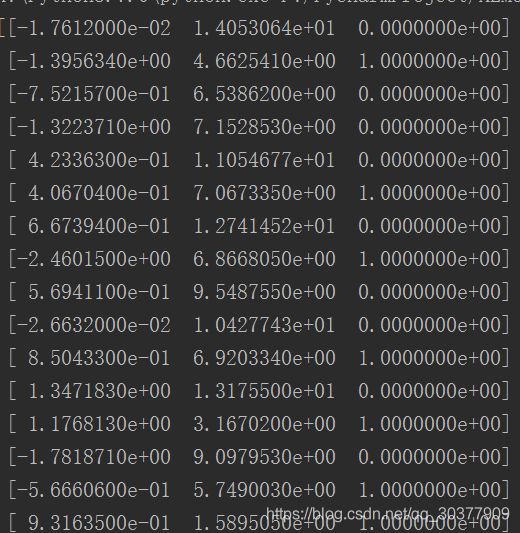
作图观察数据集
def plot():
x0 = []
x1 = []
y0 = []
y1 = []
# 切分不同类别的数据
for i in range(len(x_data)):
if y_data[i] == 0: # 0类别
x0.append(x_data[i, 0])
y0.append(x_data[i, 1])
else: # 1类别
x1.append(x_data[i, 0])
y1.append(x_data[i, 1])
#画图
scatter0 = plt.scatter(x0, y0, c='b', marker='o') # 蓝色圆点表示0类别
scatter1 = plt.scatter(x1, y1, c='r', marker='x') # 红色×表示1类别
#画图例
plt.legend(handles=[scatter0, scatter1], labels=['label0', 'label1'], loc='best')
plot()
plt.show()
# 数据处理,添加偏置项
x_data = data[:, :-1]
y_data = data[:, -1, np.newaxis]
# 给样本添加偏置项(x_data是100行2列的数据,y_data是100行1列的数据)
# 可用np.mat(x_data).shape测试
X_data = np.concatenate((np.ones((100, 1)), x_data), axis=1)
到这里,数据准备的工作完成
X_data为100行3列的数据,第0列是我们添加的偏置,都为1,后两列为特征值
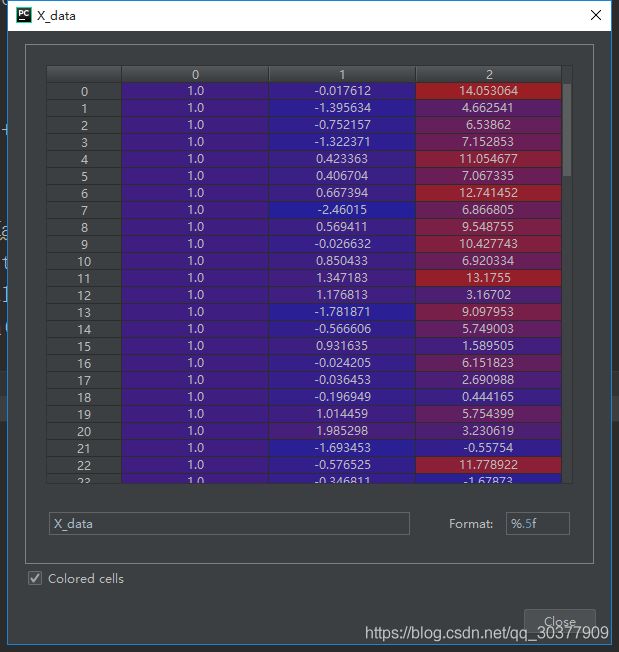
梯度下降法实现逻辑回归
定义sigmoid函数:
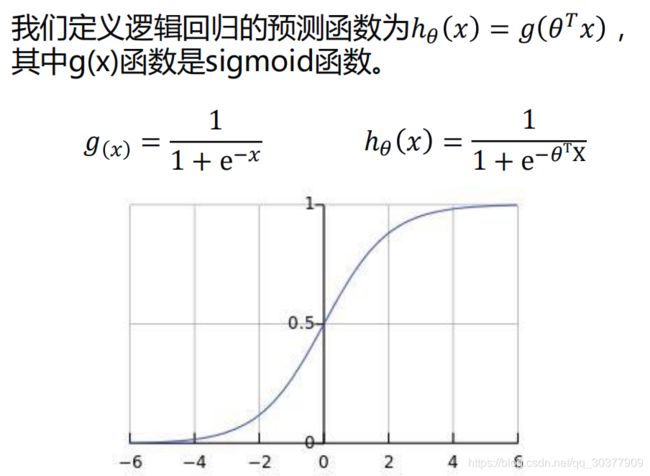
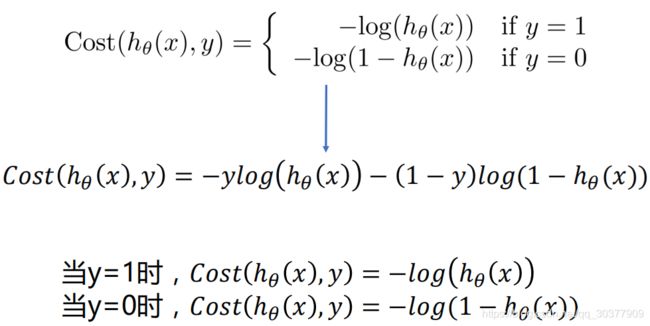

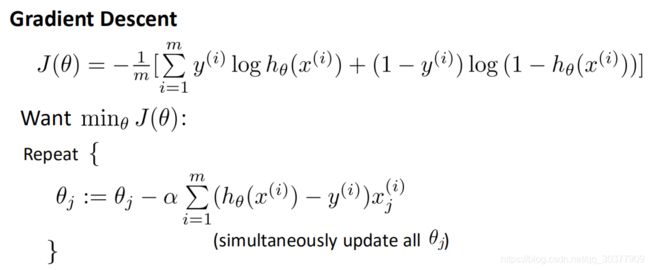
整个计算过程则是根据上面的几张图来进行
def sigmoid(x):
return 1.0/(1+np.exp(-x))
定义代价函数
def cost(xMat, yMat, ws):
left = np.multiply(yMat, np.log(sigmoid(xMat*ws)))
right = np.multiply(1-yMat, np.log(1-sigmoid(xMat*ws)))
return np.sum(left + right) / -(len(xMat))
定义梯度下降方法
def gradDscent(xArr, yArr):
if scale == True:
xArr = preprocessing.scale(xArr)
xMat = np.mat(xArr)
yMat = np.mat(yArr)
lr = 0.001
epochs = 10000
costList = []
# 计算数据行列数
# 行代表数据个数,列代表权值个数
m, n = np.shape(xMat)
# 初始化权值
ws = np.mat(np.ones((n, 1)))
for i in range(epochs + 1):
# xMat和weights矩阵相乘
h = sigmoid(xMat * ws)
# 计算误差
ws_grad = xMat.T*(h - yMat)/m
ws = ws - lr * ws_grad
if i % 50 == 0:
costList.append(cost(xMat, yMat, ws))
return ws, costList
# 模型训练,得到权值和cost值的变化
ws, costList = gradDscent(X_data, y_data)
print(ws)
计算结果
# 模型训练,得到权值和cost值的变化
ws, costList = gradDscent(X_data, y_data)
print(ws)
画出决策边界
if scale == True:
#画图决策边界
plot()
x_test = [[-4], [3]]
y_test = (-ws[0] - x_test * ws[1]) / ws[2]
plt.plot(x_test, y_test, 'K')
plt.show()

补充:y的求解
前边已经求出了3个权重,则转化为等式
w1x+w2y+w0b=0
y=(-b-w1x)/w2,其中,b=1
画出损失函数(costLost)变化曲线:
x = np.linspace(0, 10000, 201)
plt.plot(x, costList, c='r')
plt.title('Train')
plt.xlabel('Epochs')
plt.ylabel('Cost')
plt.show()
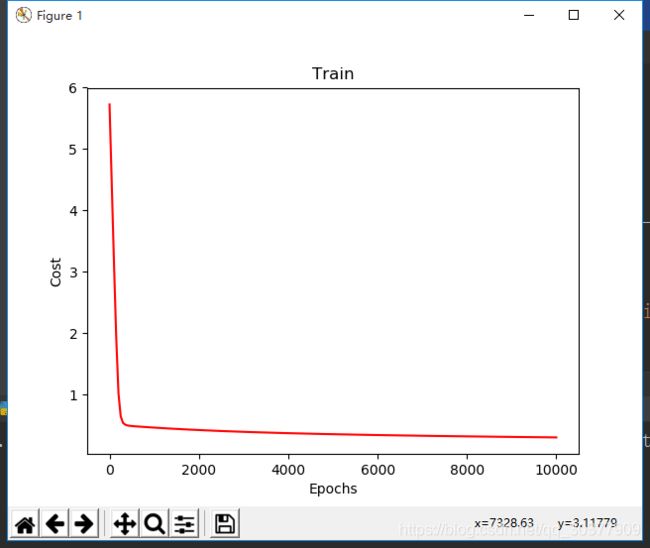
最后进行预测
导入classification_report
from sklearn.metrics import classification_report
def predict(x_data, ws):
if scale == True:
x_data = preprocessing.scale(x_data)
xMat = np.mat(x_data)
ws = np.mat(ws)
# 大于0.5取1,否则返回0
return[1 if x >= 0.5 else 0 for x in sigmoid(xMat*ws)]
predictions = predict(X_data, ws)
print(classification_report(y_data, predictions))
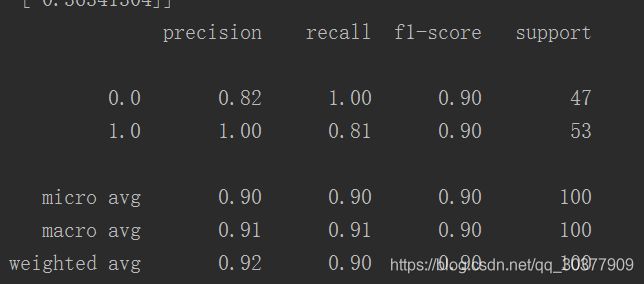
最后可以看到,属于‘1’类的有53个,属于‘0’类的有47个。
sklearn实现逻辑回归
前期的数据处理完全一样,直接从构建模型开始
logistic = linear_model.LogisticRegression()
logistic.fit(x_data, y_data)
画决策边界,计算方法与梯度下降法中的说明一致。
if scale==False:
# 画图决策边界
plot()
x_test = np.array([[-4], [3]])
y_test = (-logistic.intercept_ -x_test*logistic.coef_[0][0])/logistic.coef_[0][1]
plt.plot(x_test, y_test, 'k')
plt.show()
print(logistic.coef_) # 代表权值,但是二维的数据,所以取值时[0][0]或者[0][1]
predictions = logistic.predict(x_data)
print(classification_report(y_data, predictions))

